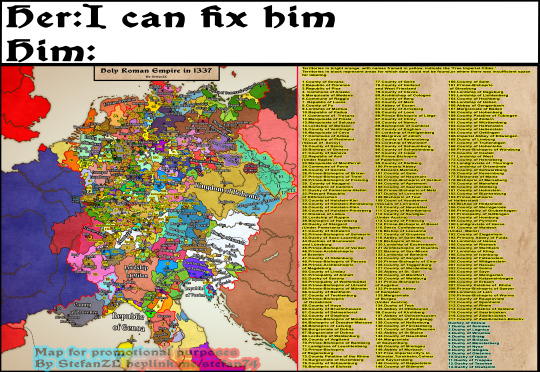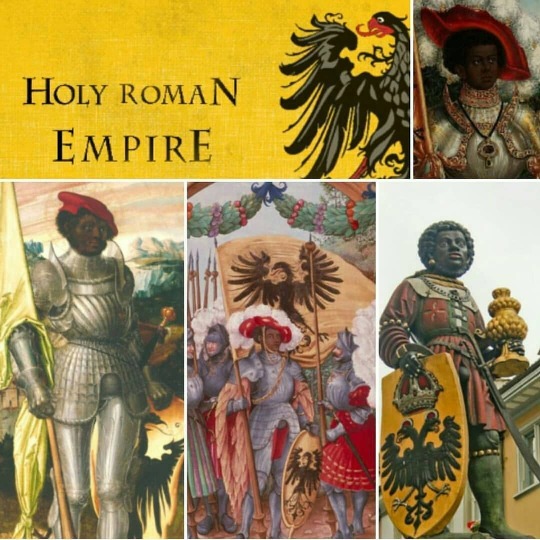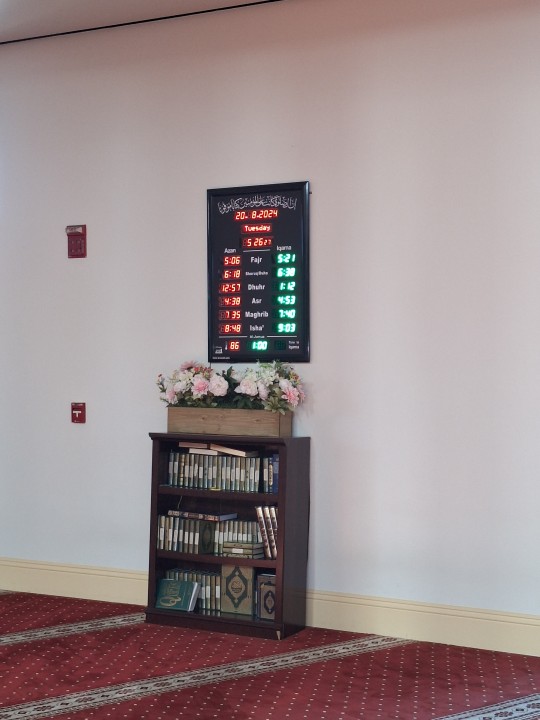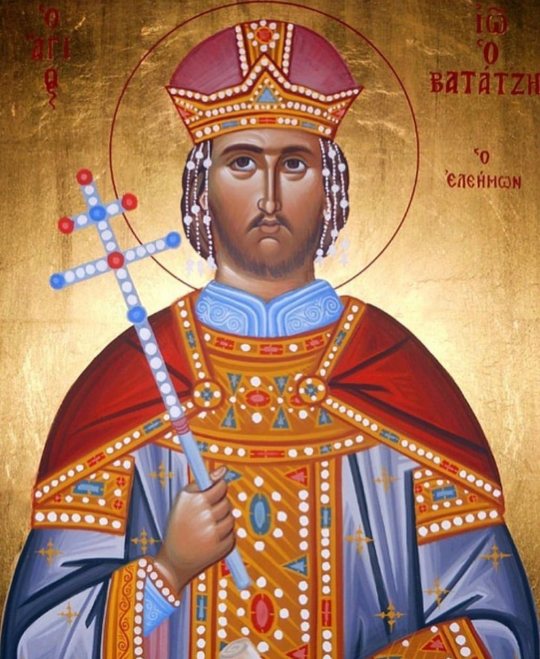#holyromanempire
Explore tagged Tumblr posts
Photo

Peace of Westphalia
The Peace of Westphalia, the name given to the multiple treaties, marked the conclusion of the Thirty Years' War. Signed on 24 October 1648, it aimed to secure political autonomy for the multitude of small states that made up the Holy Roman Empire, allowing religious freedoms across the divided realm.
The peace also gave rise to the political concept known as Westphalian sovereignty, which declares that states, regardless of size, have the right to self-governance – a concept that still exists within the systems of international relations today.
Prelude to War
While many Christian states in Europe were relatively homogenous entities, subservient to the seat of power in their respective capitals, the Holy Roman Empire could more accurately be described as a collection of states and kingdoms of varying sizes unified under the authority of a single emperor, whilst being largely distinct from one another. This decentralised model allowed for considerable autonomy for the individual states, allowing significant political and diplomatic freedoms whilst still, in theory, maintaining allegiance to the Holy Roman Emperor. At the same time, the freedoms of the constituent states allowed them to exercise levels of autonomy regarding religion.
The question of religious freedoms in particular began to strain the political cohesion of the empire. Following Martin Luther's 95 Theses and the start of the Protestant Reformation in 1517, the Holy Roman Empire gradually became divided over which form of Christianity was seen as legitimate, with the emperor and his allies championing the established Roman Catholic tradition, whilst the Schmalkaldic League (established on 27 February 1531) embraced the new Protestant Lutheran tradition. This division inevitably led to conflict between the two factions, culminating in two wars known as the First (1546-1547) and Second (1552) Schmalkaldic Wars. These conflicts officially ended in 1555 at the Peace of Augsburg, which split the Holy Roman states between Catholicism and Lutheranism and allowed the ruler of each state within the empire to choose their religious preference. The peace, however, was far from perfect, and tensions between the two groups continued to grow, eventually coming to a head as Europe entered the 17th century.
In 1608, one of the Holy Roman Empire's most important governmental bodies, the Imperial Diet, was called, and the most pressing matter was that of the Peace of Augsburg. Between the signing of the Augsburg treaty in 1555 and the diet, the Protestant states of the empire had greatly increased their power. Many more states had converted to Protestantism, and the new Protestant leaders had begun to seize land formerly owned by the Catholic Church. The Peace of Augsburg stated that Protestant monarchs who had converted prior to 1552 and who had incorporated seized Catholic assets by that date were permitted to keep them, whereas any monarch who converted to Protestantism after 1555 would not be permitted to incorporate any Catholic assets they had seized into their own territorial churches.
Religions in Europe in the 16th Century
Simeon Netchev (CC BY-NC-ND)
The treaty, however, was purposefully vague, and both the Catholics and Protestants interpreted the limitations of the treaty differently. Despite the supposed limitations, Protestants continued to expand their influence within the religious institutions of the empire well after 1555. By the Imperial Diet of 1608, the expansion of Protestant influence had become a pressing issue, and so debate around the Peace of Augsburg was at the forefront of the gathering. The Protestant leaders had come to the diet calling for a renewal of the 1555 treaty. Fearing the Protestants would continue to use the treaty to strengthen their position, Archduke Ferdinand of Austria, who had led the premier Catholic state in the Empire, agreed they would renew the treaty, but only if the Protestants agreed to return all Catholic land taken since 1552. The Protestant delegates were expectedly furious at the suggestion and left the diet in protest. In reaction to the hostile end to the Imperial Diet, the Empire was effectively split into two factions: The Protestant Union, founded in 1608 by Frederick IV of the Palatinate, and the Catholic League, founded the following year by Maximillian I, the Duke of Bavaria.
Continue reading...
31 notes
·
View notes
Text

Can she, tho? 🤔 A meme created from my map 'The Holy Roman Empire in 1337' 🗺️—for those who don't find maps interesting on their own 😅
#HolyRomanEmpire#HistoricalMeme#MapMeme#1337#HistoryHumor#MapArt#HistoryGeeks#MapLovers#MedievalHistory#Cartography#HRE#CanSheTho#HistoryInMaps#MapCollectors#DigitalArt#MapDesign
2 notes
·
View notes
Text
The throne of Charlemagne
The first Holy Roman Emperor
youtube
#charlemagne#aachen#deutschland#Germany#visit Germany#hidden gems#youtube#travel#wanderlust#wonderjourneys#tourism#touristdestination#hre#holyromanempire#architecture#byzantine
4 notes
·
View notes
Text

Chibi pony collection for commission examples, features many new characters that I've recently designed! I will be opening commissions this weekend as soon as I update my prices and examples.
OCs
Algeria
Quebec
Holy Roman Empire
Historic Shine (Corrupted)
#algeria#artist#canada#chibi#digitaldrawing#digitalillustration#holyromanempire#occharacter#photoshop#quebec#ocsoriginalcharacter#artworkdigital#chibicutekawaii#ponyoc#countrypony#ponyoccharacter#artistsontumblr#art#nationpony
5 notes
·
View notes
Text










Bissmillah'hir'Rahman'hir'Rahim❗️
• "Allah likes smiling people," says our Grandshaykh.
"The highest degree for the human being is to smile at every event. It is one of the signs of Iman (faith) that may be seen in those who sit on the throne of the Awliya. It means that he is satisfied with the will of Allah Almighty, not fighting or coming opposite to Him."
Only a few people can reach this point; among millions only one or two will reach it. They are very rare, like rubies among stones. Our Grandshaykh is teaching us little by little, directing us to that aim. It is very hard. One doesn't reach the summit of Everest on the first step !
They who succeed are kings in the next life with private stations in paradise. No one can know what is in them. If one knew even a little, they would smile at every event, for every wrong' in this world ! They would be pleased with everyone. If a man is pleased with everyone and everything, he is in Paradise now! It is difficult, but we must try.
We must know that no pleasure or sorrow in this life can last, but will come to an end and pass away. There is, therefore, no need to dwell upon a sorrow, no need to hold it in the mind. When a sorrow comes have patience, and a pleasure will come as a result. It is difficult, but important, to be satisfied with Allah Almighty when there is sorrow and things are not to our liking.
• Sultan-ul-Awliya Malawna Shaykh Nazim (ks)
➖️ Fātíāh 🕋
#TuffTuesday#PowerMoonFasting#PowerMoon#FastingOnWhiteDays#revivethesunnah#themoorish#MOORS#theunitingofasia#HolyRomanEmpire#QueenEuropa#TheMoor#DTLA#ceasethefolly#losangelesnow#masjidumaribnkattab#naqshbandi#SufiStyle#Sūfíc#MalawnaShaykhNazimAlHaqqani#ShaykhNazim
0 notes
Text
youtube
As we move into the 18th and 19th centuries, we'll examine the rise of Prussia, the Napoleonic Wars, and the unification of Germany under Otto von Bismarck in 1871. We'll delve into the rapid industrialization and modernization of the German Empire, as well as its colonial ambitions and rivalries with other European powers. The video will then cover Germany's fateful role in World War I, the collapse of the empire, and the turbulent years of the Weimar Republic. We'll explore the rise of Adolf Hitler and the Nazi Party, the horrors of World War II and the Holocaust, and Germany's ultimate defeat and division.
#GermanHistory#HistoryofGermany#HolyRomanEmpire#ProtestantReformation#ThirtyYearsWar#PrussianEmpire#GermanUnification#OttovonBismarck#GermanEmpire#WorldWarI#WeimarRepublic#AdolfHitler#NaziGermany#WorldWarII#Holocaust#ColdWarGermany#EastGermany#WestGermany#BerlinWall#GermanReunification#EuropeanUnion#GermanLeadership#ModernGermany#EuropeanHistory#HistoryDocumentary#Youtube
0 notes
Text
#danielprophecy#danielstatue#worldempires#bible#prophecies#predictions#nothernking#southernking#babylonthegreat#romanempire#byzantium#holyromanempire#russianempire#eu#ussr#pagantimes#nabudnezzarstatue
0 notes
Text
youtube
#riccato#history#youtube#30yearswar#religionwar#germany#hre#holyromanempire#france#sweden#netherlands#80yearswar#spain#Youtube
0 notes
Text






On This Day: July 25, 1564
Maximilian II (1527-1576) becomes emperor of the Holy Roman Empire.
⠀
⚜️ Elements of an Armor Garniture, c. 1550-1555
Medium: Steel, partially embossed, etched and blackened, and gilded; copper alloy (brass); leather; textile
Made in Augsburg
Philadelphia Museum of Art
⠀
This armor is part of a great garniture that included over five hundred pieces. It is believed to have belonged to the Holy Roman Emperor Maximilian II. The other related components of the garniture are preserved in the Historisches Museum der Stadt in Vienna, Austria.
⠀
⚜️ Overall of shield and helmet reinforce from Armor Garniture of Maximilian II, German, Augsburg, ca. 1550
Medium: Steel, etched and gilt
Dimensions: H.- 12.1 cm; W.- 21.9 cm; Wt. - 737.1 g.
The MET
⠀
🖼 Portrait of Maximilian II, circa 1566
Artist: Workshop of Nicolas Neufchatel (fl. 1539–1567)
KHM Wien
⠀
- -
В этот день:
25 июля 1564 года Максимилиан II (1527-1576) становится императором Священной Римской империи.
⠀
⚜️ Элементы доспешного гарнитура, ок. 1550-1555
Материалы: Сталь, чеканка, травление, чернение, золочение; медный сплав (латунь); кожа; текстиль
Изготовлен: в Аугсбурге, Германия
Художественный музей Филадельфии
⠀
Этот доспех является частью большого гарнитура, насчитывавшего более пятисот деталей. Предполагается, что он принадлежал императору Священной Римской империи Максимилиану II. Другие связанные компоненты гарнитура хранятся в Историческом музее города в Вене, Австрия.
⠀
⚜️ Усиление щита и шлема из комплекта доспехов Максимилиана II, Аугсбург, ок. 1550
Материалы: Сталь, травление и позолота
Размеры: Высота - 12,1 см; Ширина - 21,9 см; Вес - 737,1 г.
The MET
⠀
🖼 Портрет Максимилиана II, ок. 1566 г.
Автор: Мастерская Никола Невшателя (время активности 1539–1567)
Музей истории искусств, Вена
⠀
#MaximilianII #МаксимилианII #HolyRomanEmpire #доспехи #armor #medievalarmor #medieval_armor #NicolasNeufchatel #НиколаНевшатель
#medieval#средневековье#middleages#history#armor#armours#история#harnisch#armadura#armour#Максимилиан II#Maximilian II
70 notes
·
View notes
Text

Tehee just got back from vacation and i got out of art block god bless, anyways DE has been rattling in my brain for 4 days now and its actually the reason i got out of art block... im normal and sane and i can totally feel myself NOT having an autism level 7 event over it /s Eitherway this is an attack on @neorazorhands / HolyRomanEmpire on AF , decided not to reupload cause of my fuckup with the glasses and just ended up postin the fixed version on here sorry again op
7 notes
·
View notes
Photo

The Rise of the Holy Roman Empire in 4 Maps
In this gallery of four maps we chart the rise and expansion of the Holy Roman Empire, a pivotal period in European history following the decline of the Roman Empire. Emerging from the ashes of Rome's collapse, the Merovingian Dynasty in Gaul, led by figures such as Syagrius and Clovis, laid the groundwork for the empire's formation, albeit in a fragmented manner. However, it was under the rule of Charlemagne, crowned Emperor of the Romans in 800, that the idea of a united Christian empire gained momentum. His conquests expanded the empire's influence, paving the way for Otto the Great's coronation in 962, formally establishing the Holy Roman Empire, and ushering in a new era of medieval Europe.
Continue reading...
35 notes
·
View notes
Text

🌍 Map of the Holy Roman Empire in 1337 – Complete! 🏰
After countless hours of work, I'm excited to share my latest creation: a detailed map of the Holy Roman Empire as it stood in 1337, featuring over 250 individual territories! This is just one part of a larger project where I’m recreating the political landscape of Europe, the Middle East, and North Africa in 1337. 🗺️
I hope you find it as fascinating as I did while making it. Stay tuned for more updates as I bring this historical project to life!
Print/Social Media/Donations heylink.me/stefan74
#-#HolyRomanEmpire#medievalhistory#historicalmapping#cartography#EuropaUniversalisIV#europauniversali#europauniversalisv#mapmaking#mapping#maps#history#Empire#bohemian#europe#medieval#historylovers#historybuff#historymatters#medievalmap#renaissance c#Crusaders#HundredYearsWar
2 notes
·
View notes
Text
Cathedral inside Prague Castle - St Vitus Cathedral
youtube
#travel#youtube#wanderlust#wonderjourneys#tourism#touristdestination#czech republic#praque#praha#hrad#cathedral#archtitecture#holyromanempire#hre#bohemian#Europe#goth aesthetic#gothic
7 notes
·
View notes
Text
I'm delighted to welcome Malve von Hassel and her new book, The Falconer's Apprentice, to the blog #HistoricalFiction #HolyRomanEmpire #FrederickII #CasteldelMonte #falconry #MedievalMedicine #BlogTour #TheCoffeePotBookClub
I'm delighted to welcome Malve von Hassel and her new book, The Falconer's Apprentice, to the blog #HistoricalFiction #HolyRomanEmpire #FrederickII #CasteldelMonte #falconry #MedievalMedicine #BlogTour #TheCoffeePotBookClub @MvonHassell @cathiedunn
I’m delighted to welcome Malve von Hassel and her new book, The Falconer’s Apprentice, to the blog. Here’s the blurb THE FALCONER’S APPRENTICE is a story of adventure and intrigue set in the intense social and political unrest of the Holy Roman Empire in the thirteenth century. “That bird should be destroyed!” Andreas stared at Ethelbert in shock. Blood from an angry-looking gash on the young…

View On WordPress
#Blog Tour#Falconery#historical fiction#Holy Roman Empire#Medieval Medicine#New Release#The Coffee Pot Book Club
0 notes
Text
**The Falconer’s Apprentice**
Book Title: The Falconer’s Apprentice Series: n/a Author: Malve von Hassell Publication Date: January 30, 2024 (second edition) Publisher: Malve von Hassell Pages: 214 Genre: Historical Fiction Twitter Handles: @MvonHassell @cathiedunn Instagram Handles: @mvonhassell @thecoffeepotbookclub Hashtags: #HistoricalFiction #HolyRomanEmpire #FrederickII #CasteldelMonte #falconry…

View On WordPress
0 notes
Photo

Today we celebrate the Holy Emperor John Vatatzes the Merciful. Saint John was married to Irene, the daughter of Theodore Laskareos, the pious man who composed the Great Paraklesis to the Theotokos. Soon after his marriage, he ascended the throne as Emperor of Nicea in 1222 AD. He ruled with Christ-like justice and meekness, and gave alms generously to the people. He reposed in peace after many years of servitude to his people. Seven years after his burial, through divine revelations, the faithful were instructed to translate his relics to Magnesia in Asia Minor. When they opened the tomb, instead of a rotting corpse and a foul odour, they found the righteous king’s body completely in tact, emitting a heavenly fragrance. The skin of the Saint had not darkened at all and it was said he looked as if he was made of white marble. From here developed the tradition of the Marble King. According to tradition (and even many saints) before the end of time, the Marble King will rise from his tomb and liberate his people. Many Christians hope in this being the means of reclaiming our kingly City of Constantinople. May he intercede for us all + #saint #john #vatatzes #merciful #holy #emperor #romanemperor #holyromanempire #marbleking #marmaromenosvasilias #byzantine #byzantium #irene #relics #holyrelics #meekness #christ #jesus #jesuschrist #nicea #paraklesis #greatparaklesis #author #composer #orthodox (at Constantinople - Κωνσταντινούπολη) https://www.instagram.com/p/CkgtdNqrxhA/?igshid=NGJjMDIxMWI=
#saint#john#vatatzes#merciful#holy#emperor#romanemperor#holyromanempire#marbleking#marmaromenosvasilias#byzantine#byzantium#irene#relics#holyrelics#meekness#christ#jesus#jesuschrist#nicea#paraklesis#greatparaklesis#author#composer#orthodox
12 notes
·
View notes